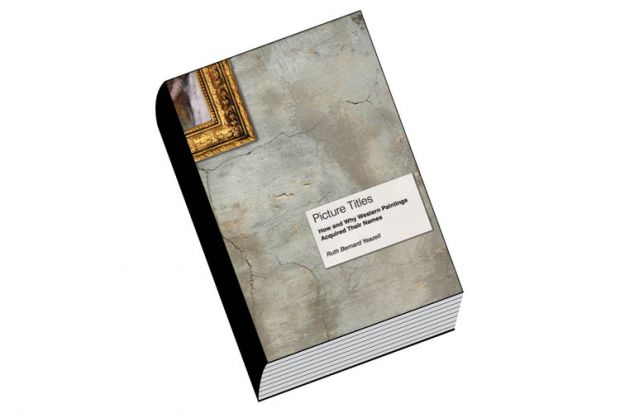Exploring the “titular adventures” of paintings, Ruth Bernard Yeazell unearths caricatures, anecdotes and critical responses. One of Paul Cézanne’s untitled works acquired the name Diane et Acteon because his dealer forgot to remove an old cartouche on the frame. “Who the hell is Pasiphaë?” asked Jackson Pollock, after a curator gave that name to one of his paintings because the patron Peggy Guggenheim didn’t care for Pollock’s own title, Moby Dick. Mocking James Abbott McNeill Whistler’s strategy of giving his paintings musical titles, Punch printed a caricature titled An Arrangement in Fiddle-de-dee, and The Examiner came up with A Polka-Mazurka in Tartan Plaid. J. M. W. Turner’s titling fared no better. The Literary Gazette grumbled that “it has pleased Mr. Turner…to give a name to a gorgeous assemblage of splendid hues, which has no, or scarcely any, connection with the subject indicated in the title”.
We tend to imagine artwork titles to be the province of the artist, but, as Yeazell’s research shows, they were often composed by middlemen, including auctioneers, cataloguers and printmakers. By the 18th century, changing conditions of display and marketing required titles. Descriptive accounts created for inventories and identification in public displays gradually morphed into titles. Artists began to title their own works, writing on the back of their canvases. Expository and title labelling in galleries is a modern practice that began with a few experiments in the 19th century and was widely adopted in the 20th century.
Picture Titles is well structured, moving forward effectively in short, well-argued sections. Yeazell’s account is based on detailed study of documentary evidence, including Salon exhibition guides – the livrets, 18th-century auction catalogues, and the French Académie minutes. The book’s first half focuses on titles in relation to middlemen and viewers, and the second presents case studies of Jacques-Louis David, Turner, Gustave Courbet, Whistler, René Magritte and Jasper Johns.
Yeazell convincingly argues that some artists contribute to theory not only in essays and manifestos but also in their decisions about titling. Titles threaten to short-circuit a viewer’s experience and several artists resisted this tendency to render artworks legible. Whistler declared war between the brush and the pen, opposing the popular tendency to read paintings as narrative. The dominance of the written word was increasingly registered as a problem, with George Moore complaining in 1893 that “painters seemed to have lived in libraries rather than studios”. “A painting, for me, speaks by itself…A painter has only one language,” declared Picasso, while Clyfford Still asserted, “My paintings have no titles because I do not wish them to be considered illustrations or pictorial puzzles.” Yeazell’s rewarding discussion of Magritte shows how he saw a good title as one that intensified the effect of the image without pretending to explain it.
Yeazell touches only briefly on abstract art and does not venture far into the contemporary period, in which many artists have played with text and image. The book ends rather abruptly, with no conclusion; a bibliography, in addition to references in the Notes, would have been helpful. But only a few other writers, including John Welchman and Leo Hoek, have tackled this subject, and Yeazell’s book is a rewarding addition to the literature.
Tracey Warr was formerly senior lecturer in fine art theory, Oxford Brookes University. She is co-editor of Remote Performances in Nature and Architecture (2015).
Picture Titles: How and Why Western Paintings Acquired Their Names
By Ruth Bernard Yeazell
Princeton University Press, 352pp, £24.95
ISBN 9780691165271 and 9781400873463 (e-book)
Published 28 October 2015
Register to continue
Why register?
- Registration is free and only takes a moment
- Once registered, you can read 3 articles a month
- Sign up for our newsletter
Subscribe
Or subscribe for unlimited access to:
- Unlimited access to news, views, insights & reviews
- Digital editions
- Digital access to THE’s university and college rankings analysis
Already registered or a current subscriber?




